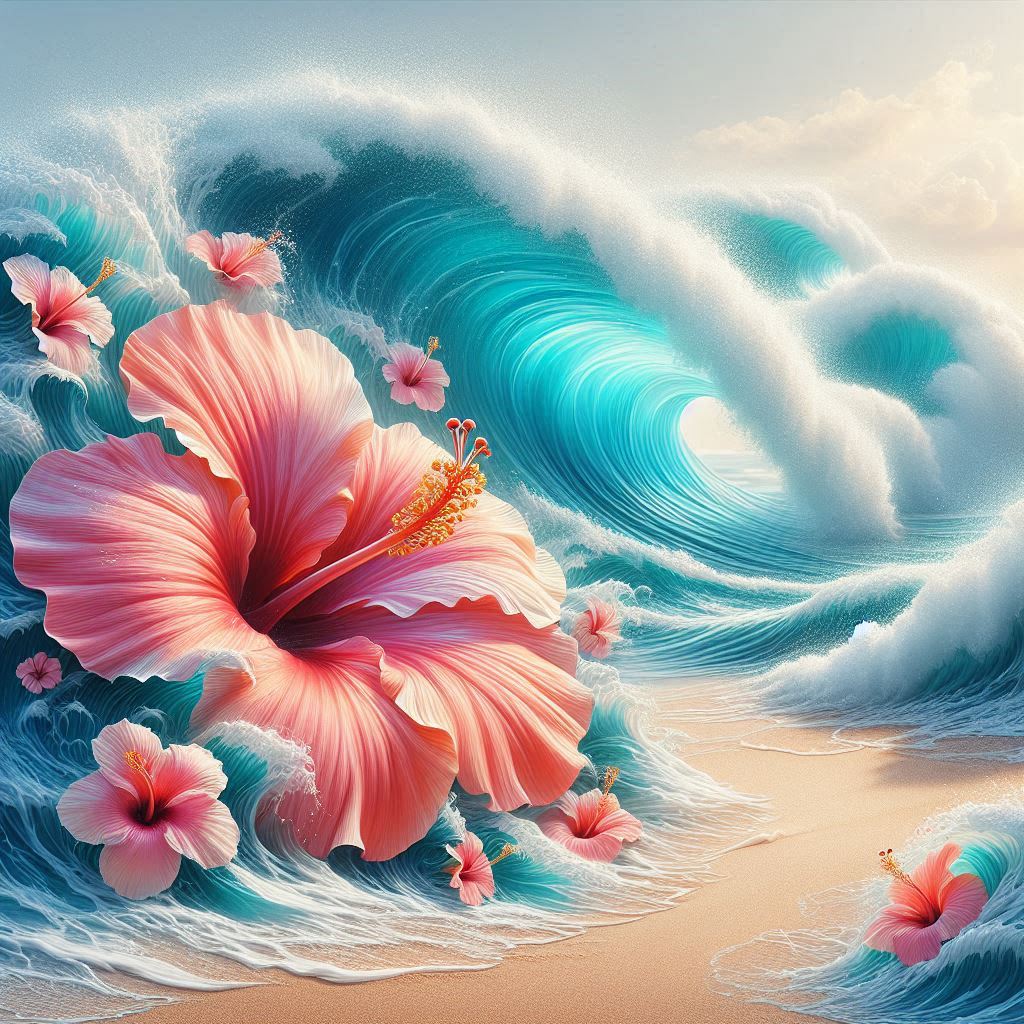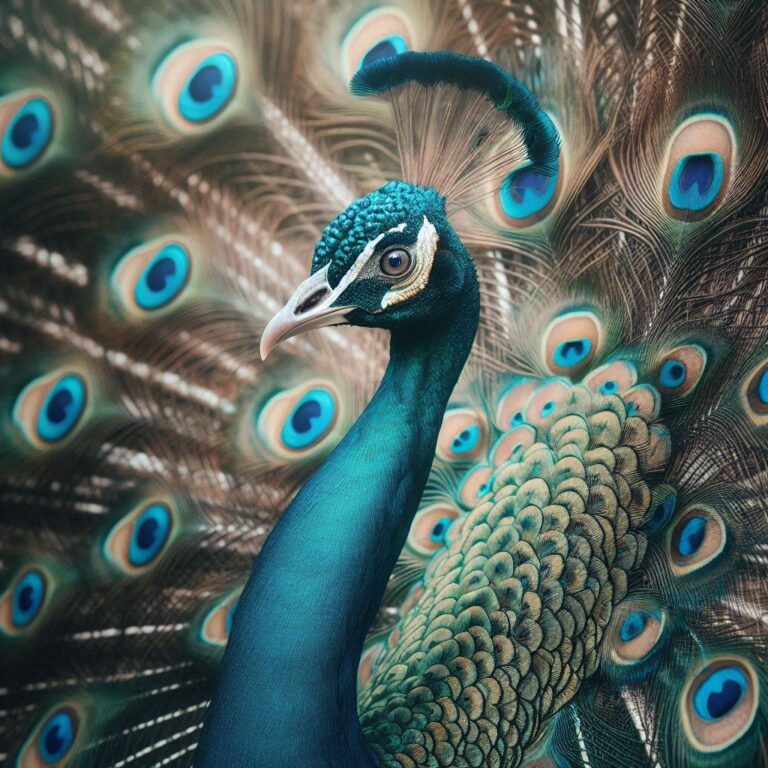The hibiscus flower stands as a symbol of life’s vitality, abundance, and beauty. Its wide, open petals celebrate the richness of the present moment. Its vibrant colors and delicate form embody the spirit of full expression and living without hesitation. I carry the hibiscus close to me, inked on the back of my neck as a daily reminder of life’s bounty and beauty. Now, let’s dive into the hibiscus meaning and explore the symbolism it holds.
- The Spiritual Meaning of Hibiscus
- Meaning and Symbolism of Hibiscus
- Hibiscus as a Dream Symbol and Spiritual Sign
- Tropical Hibiscus Meaning
- Hardy Hibiscus Meaning
- Hibiscus Symbolism in Different Cultures
- Hibiscus – Meaning based on Attributes
- Hibiscus and the Balance of Yin and Yang
- Hibiscus Meaning FAQ
- Final Thoughts
The Spiritual Meaning of Hibiscus
Every time hibiscus appears — whether in nature, in art, or in dreams — it brings a clear message: to live vividly, to trust the seasons of life, and to recognize the beauty already unfolding.
Meaning and Symbolism of Hibiscus
Hibiscus symbolizes beauty, vitality, love, femininity, grace, passion, and transience. It reminds us to celebrate life’s vivid moments and to honor the fleeting nature of all beautiful things.
Common uses of hibiscus include teas, culinary dishes, and ornamental planting, where its vibrant blooms bring color and life to gardens and homes.
Hibiscus as a Dream Symbol and Spiritual Sign
When hibiscus appears in dreams, it often reflects a moment of growth, creativity, or a chance that will not wait long. It can also be a gentle nudge to appreciate beauty where you find it — not tomorrow, but today.
As a spiritual sign, encountering hibiscus can be an encouragement to open your heart wider, to trust the abundance around you, and to live with more color and courage.

Tropical Hibiscus Meaning
The beautiful tropical hibiscus (Hibiscus rosa-sinensis), often called Hawaiian Hibiscus or Chinese Hibiscus, thrives in warm, sun-drenched climates. It carries a bright, bold energy and symbolizes vitality, passion, beauty, femininity, joy, and hospitality. Tropical hibiscus places a stronger focus than other varieties on feminine beauty, sensuality, and the celebration of life’s fleeting pleasures. In places like Hawaii and Tahiti, hibiscus flowers are offered as signs of welcome, openness, and warmth. The spirit of the tropical hibiscus calls us to bloom fully in the present, to live vividly, and to trust the richness of embodied life.
Hardy Hibiscus Meaning
Hardy hibiscus (Hibiscus moscheutos, Hibiscus syriacus, and others) carries a quieter, more enduring energy. It symbolizes resilience, healing, grounded beauty, and strength that grows over time. Unlike tropical varieties, hardy hibiscus blooms in late summer, offering its massive, show-stopping flowers for a concentrated season before resting again. This rhythm mirrors the cycles of patience, perseverance, and natural renewal. Hardy hibiscus thrives in harsher climates and returns year after year, teaching that true beauty does not fear change or hardship. It invites us to honor the seasons of growth in our lives, to trust our inner resilience, and to recognize strength in all its subtle, enduring forms.
Hibiscus Symbolism in Different Cultures
- China: Love, fame, and beauty.
- Hawai’i: Femininity, grace, and welcoming spirit.
- India: Intense passion, divine offering (sacred to Goddess Kali).
- Egypt: Rejuvenation, vitality, and healing (especially through hibiscus tea).
Hibiscus – Meaning based on Attributes
- Delicate, open petals → Represent a combination of receptivity and self-expression.
- Brief yet radiant bloom → Symbolizes the impermanence of life and the importance of savoring transient beauty.
- Red hibiscus in Hinduism → Embodies Shakti, the raw power of creation and transformation, linking hibiscus to fierce feminine devotion and strength.
- Pollinator-friendly nature → Represents natural attraction and magnetism, showing that true feminine energy draws in what is needed without striving.
- Thriving in tropical climates → Reflects adaptability and resilience, mirroring the feminine ability to nurture and flourish in different environments.
- Used in herbal medicine and teas → Connects to nourishment and healing, both physically and emotionally, through its antioxidant and anti-inflammatory properties.

Hibiscus and the Balance of Yin and Yang
While hibiscus is mostly associated with softness and feminine energy, if you look closely, another story unfolds. In the center of each bloom rises the stamen — a strong, upright structure reaching outward — a clear expression of yang energy.
To me, the hibiscus holds both yin and yang within a single flower:
- the soft, open petals representing yin — receptivity, flow, nurturing energy,
- the strong, assertive center representing yang — self-expression, vitality, and outward force.
In this way, hibiscus embodies a natural harmony between yin and yang. It reminds me that true vitality doesn’t come from choosing one energy over the other, but from honoring the dance between both. To live fully, like the hibiscus, is to be both open and strong, both nurturing and courageous — rooted in balance, blooming without apology.
Hibiscus Meaning FAQ
What is the spiritual meaning of hibiscus?
Hibiscus symbolizes vitality, abundance, femininity, and openness to life.
What is the meaning of seeing a hibiscus flower in a dream?
Seeing hibiscus in a dream often signals a new opportunity, passion, or a reminder to live more fully in the present.
What does a red hibiscus flower symbolize?
Red hibiscus represents passionate love, boldness, and powerful life force energy.
What does a yellow hibiscus flower mean?
Yellow hibiscus stands for happiness, friendship, and positive energy.
Why is hibiscus seen as a symbol of fleeting beauty?
Because hibiscus blooms last for a very short time — typically just one day — the flower reminds us to appreciate the present moment before it fades.
Final Thoughts
The hibiscus reminds us that joy is essential to a meaningful life. We need symbols like this — vivid, living reminders that life is beautiful and that vitality is meant to be expressed. The hibiscus shows us that when we live with an open heart, life itself becomes a celebration.
If you feel called to deepen your connection with nature’s messages and energies, you may enjoy Attunement: Communicate with Nature — a guide to open your senses and receive communication from plants, animals, and the energies of nature.



